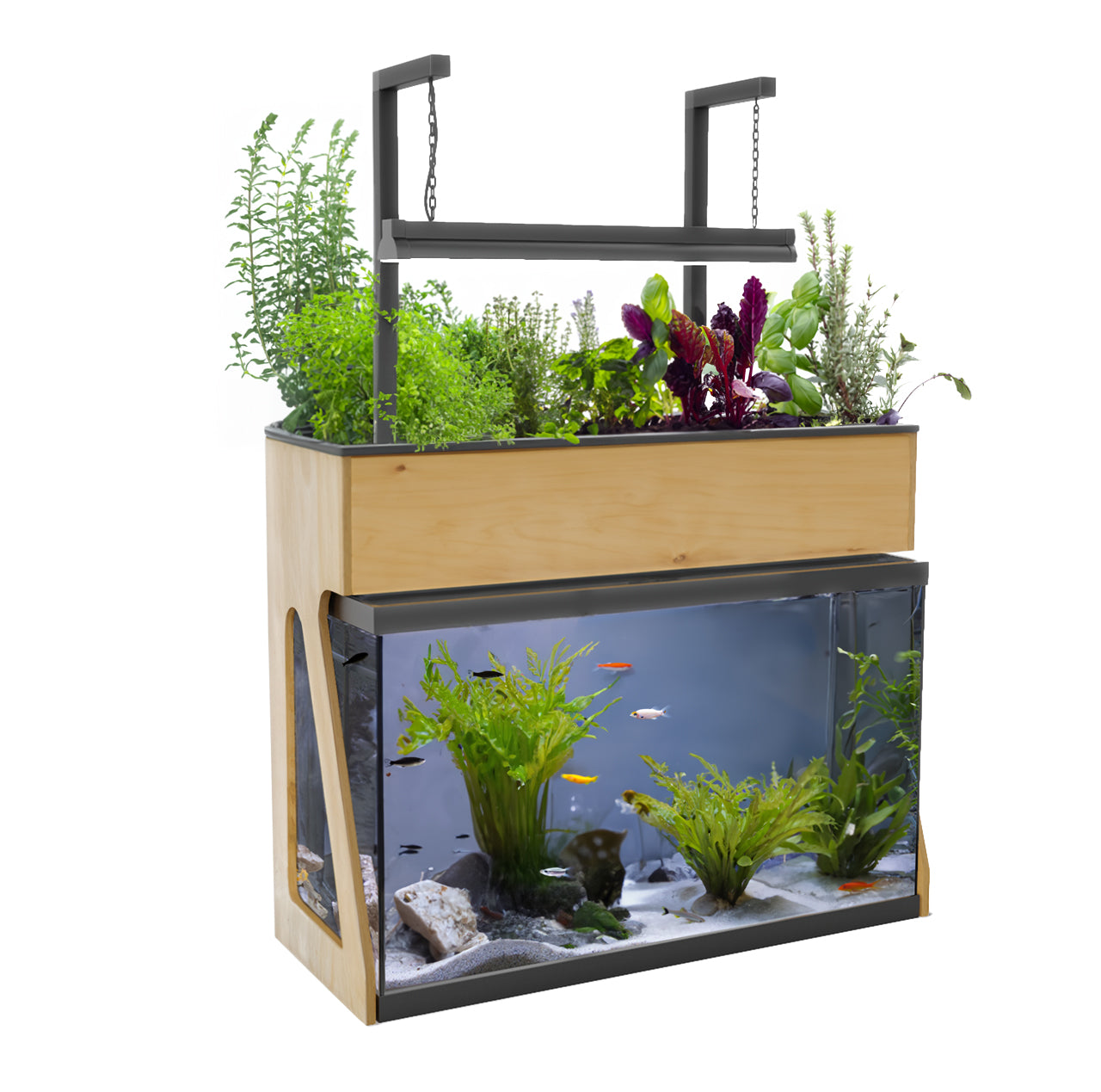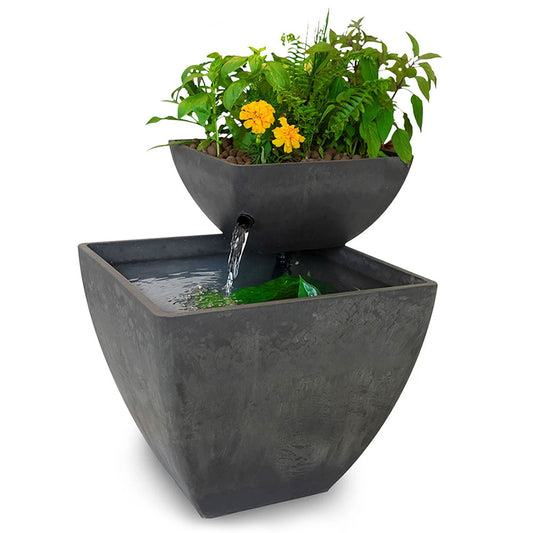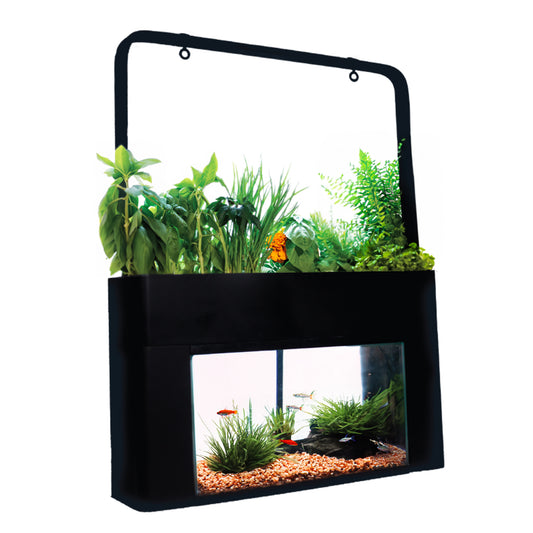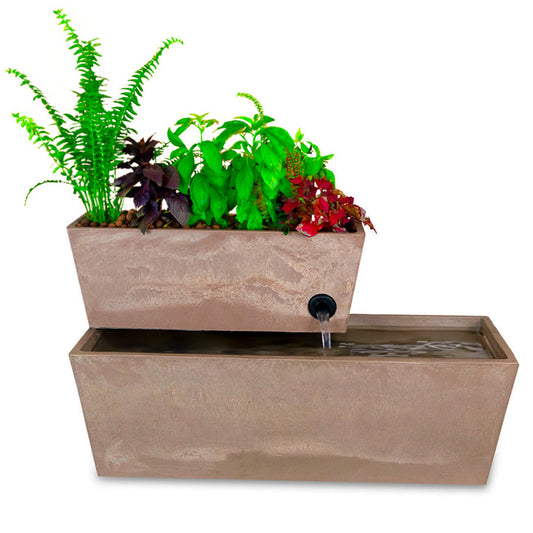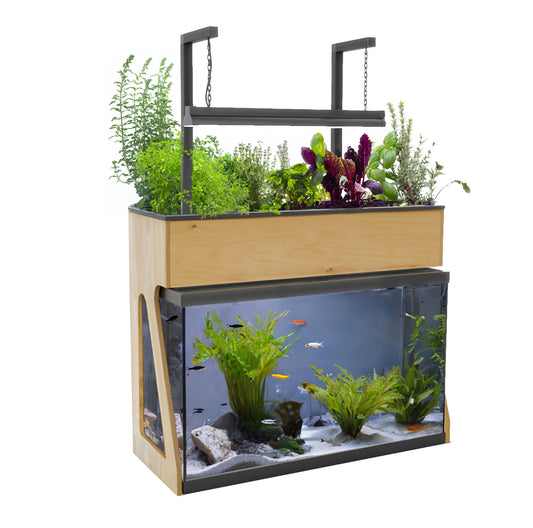Aquaponics is a method of growing plants and raising fish together in a symbiotic system. In an aquaponic system, fish are raised in tanks and the waste they produce is used to fertilize the plants. The plants, in turn, help to clean the water for the fish by absorbing the nutrients from the fish waste.
Aquaponics is a closed-loop system where the fish, plants, and microorganisms work together to create a self-sustaining ecosystem. The water from the fish tanks is pumped to the growing beds where the plants are grown, and the water is then returned to the fish tanks after it has been filtered by the plants. The plants are grown without soil, using a method such as hydroponics, where the roots are suspended in water and nutrients.
Aquaponics is a sustainable and efficient way of growing food, as it uses less water, energy and land than traditional agriculture and fish farming. Additionally, it can be done in small spaces and can be used to grow a variety of plants, including fruits, vegetables, and herbs. Aquaponics is becoming increasingly popular as a method of food production, especially in urban areas and in regions with water shortages. It also has potential for commercial use and as a way to provide food security in developing countries.
Aquaponics is important for several reasons:
- Sustainability: Aquaponics is a sustainable method of food production as it uses less water, energy, and land than traditional agriculture and fish farming. It also generates less waste and pollution.
- Efficiency: Allows for year-round crop production and a high yield of fish and plants in a small space.
- Food security: Can help to provide food security in regions with water shortages, poor soil quality, or limited land. It can also be used to grow food in urban areas where traditional agriculture is not feasible.
- Biodiversity: Promotes biodiversity as it allows for the growth of a variety of plants and fish in the same system.
- Education and Research: Aquaponics can be a valuable tool for education and research, especially in the fields of agriculture, fisheries, and environmental science.
- Community Development: Can be used for community development by providing local food production, job opportunities and education.
- Climate Change Adaptation: Aquaponics can be used as a tool for climate change adaptation, as it can be used in areas where water resources are scarce, as well as in areas where water availability is variable.
- Organic food production: Aquaponics can be used to produce organic food, as it does not rely on synthetic fertilizers or pesticides. Fish waste provides a natural source of nutrients for the plants, and the closed-loop system eliminates the need for external inputs.
- Cost-effective: Can be cost-effective as it reduces the need for external inputs such as water, fertilizer and pesticides. Additionally, the closed-loop system can reduce the costs associated with traditional agriculture and fish farming.
- Versatility: Used to grow a variety of different plants and fish, making it adaptable to different climates, geographies and cultures.
- Zero-waste system: Aquaponics systems are designed to be zero-waste systems, reusing the fish waste as plant fertilizer and recirculating the water, which helps to conserve resources.
- Social and economic development: Can help to create jobs, promote sustainable food production, and improve food security and nutrition, which can contribute to social and economic development.
- Educational and research opportunities: Aquaponics systems can be used for educational and research purposes, both in primary and higher education. It can also be used for research
Overall, aquaponics has the potential to improve food security, create jobs, and promote sustainable food production, as well as providing an efficient, sustainable, and resilient food production system that helps to preserve the environment.
